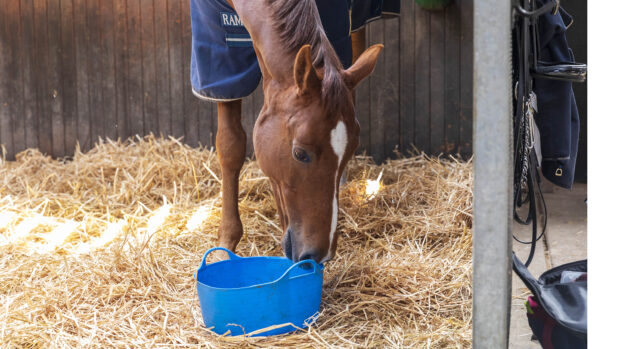Using the plastic packets in which sutures are sent could be an economical and effective method of treating serious wounds.
This is the conclusion of research published in the Equine Veterinary Journal, investigating a “novel tension relief technique to aid the primary closure of traumatic equine wounds under excessive tension”.
Study author Dylan Gorvy, a British vet based in Sweden, told H&H the “tension tile system” technique he has developed, using stitched-on small pieces of plastic around the injury, is a “game-changer for wound management”, as it relieves the tension on the surrounding skin, allowing improved healing.
Horses are susceptible to traumatic wounds, often on lower limbs, and Dr Gorvy said that if these are not managed correctly, these can mean “months and months where the horse is out of action”, often with the final result of an area of the limb that is “cosmetically poor and functionally weak, susceptible to cracking”.
He added that with traditional techniques of primary closure of wounds, the risk of dehiscence, or reopening, is high. He cited a 2002 study showing that the success rate after stitching was only 28%.
“Over the past few years, I’ve come up with this technique of using readily available material; the packs the sutures come in,” he said. “This relieves the tension on the skin – and we’ve managed to completely turn round the success rate.”
Dr Gorvy said the technique is “not rocket science”, but rather understanding the mechanics of skin. If the edges of a wound are pulled together by stitches, this puts that skin under significant tension, which decreases circulation and can lead to necrosis, and impaired healing. This tension is increased if the wound is in an area that is put under more pressure when the horse moves.
“We’re trying to take the tension away and move it away from the wound, to healthy skin,” he said, explaining that he puts foam underneath the plastic packs and stitches those on healthy skin either side of the wound, then adds more sutures through the holes in the tiles, to hold them together. The wound is stitched as normal, with the tension off.
“In a case series of 191 horses, involving three hospitals, we achieved a success rate of 69%,” he said. “Most horses were back in work after four weeks. This is really a game-changer in wound management, allowing the successful primary intention of wounds that we would never have dreamt of closing in the past.”
British Equine Veterinary Association president Roger Smith told H&H it is a “depressing reality for owners” that horses “seem to gravitate towards” objects that can wound them.
“Large wounds require closure using skin sutures or staples,” he said. “In equine lower limbs there is relatively limited skin, which means closure of larger skin defects in these regions can be challenging and can end up being under so much strain that breakdown of the repair frequently occurs.
“This study describes a simple and effective way of accommodating this tension in the surgical repair. The system was used in 22% of 860 wounds and resulted in 69% of those wounds healing without breaking down. Unfortunately it is not possible to determine whether this is better than when not using the device but its ease of use, mechanically justifiable reason, and low cost make it an attractive solution for large equine wounds.”
Dr Gorvy added: “We’ve had tremendous results. The location of the wound wasn’t relevant, the results were just as good on hocks, stifles and fetlocks, which are traditionally very difficult areas. I’ve presented on this and it’s starting to get more recognition, but it would be great for horse owners to know what’s possible.”
You might also be interested in:

The best methods for treating equine wounds
Are you up to date with the latest ideas on wound treatment? Kieran O’Brien MRCVS offers a first-aid refresher

Proud flesh in horses – dealing with tricky wounds that won’t heal

Subscribe to Horse & Hound magazine today – and enjoy unlimited website access all year round
Horse & Hound magazine, out every Thursday, is packed with all the latest news and reports, as well as interviews, specials, nostalgia, vet and training advice. Find how you can enjoy the magazine delivered to your door every week, plus options to upgrade your subscription to access our online service that brings you breaking news and reports as well as other benefits.




